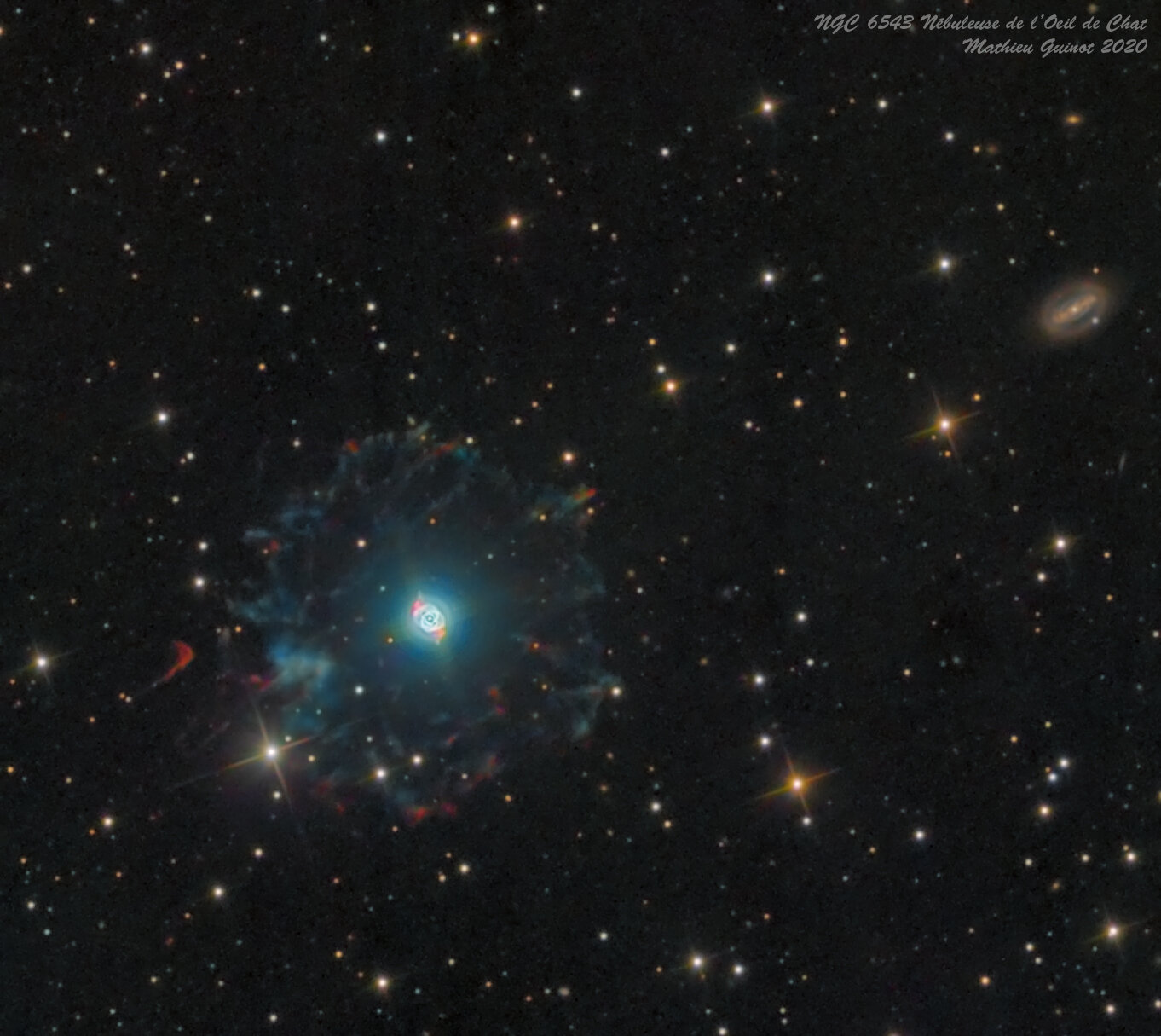NGC 6543 Cat's Eye Nebula
Image Description and Details :
The Cat Eye Nebula, NGC 6543, is a mythical object from the deep sky of the Northern Hemisphere.
It is a Planetary Nebula (expanding gas shell ejected from an end-of-life star) in the constellation of the Dragon, whose age is estimated at only 1,000 years and the distance at "only" 5,200 light years . (our galaxy has a span of 100,000 light years).
The star in the white dwarf stage is clearly visible in the center of the nebula, the central part of which has a diameter of only 20 arc seconds, which is tiny, one of the reasons why it is relatively little imagined.
The sampling used here made it possible to resolve this core of the nebula by spreading it over approximately 40 pixels of the image and thus to distinguish some details there, which was made possible by the use of one of the telescope Ritchey Chretien 500mm f / 8 from the Astroqueyras observatory in the Hautes Alpes with a focal length of 4000mm.
The outer halo of the nebula, ejected by the star when it was in the red giant stage, extends for its part over nearly 6 minutes of arc, but is much more tenuous than the central part.
It was therefore necessary to mix short exposures on the heart and long exposures on the external halo and the rest of the image and then perform HDR processing.
The galaxy of the "barred spiral" type NGC 6552 visible to the right of the cat's eye also shows us some pretty details despite its dizzying distance of around 360 million light years!
For acquisition data:
- 10 exposures of 1mn in Luminance bin 1 on the heart
- 28 exposures of 2mn in Luminance bin2 on the rest
- 15 poses of 1mn in R, G and B bin1 on the heart
- 12 poses of 2mn in R, G and B bin2 on the rest
A total of only 3 hours of exposure to acquire all of this data at the Pic de Chateau Renard observatory, Alps, France with an RC 500 f / 8 telescope on an AP1600 mount + Apogee 16000 camera
Scale 0.5"
Seeing 1.5"
Bortle 1
1.5<FWHM<1.7
Pixinsight and Photoshop 2020 processing (never managed before to obtain a version which satisfies me).
Copyright Information: Mathieu Guinot
AAPOD2 Title: NGC 6543 Cat's Eye Nebula
AAPOD2 Page Link: https://www.aapod2.com/blog/ngc-6543-cats-eye-nebula
Submit Your Photo!

